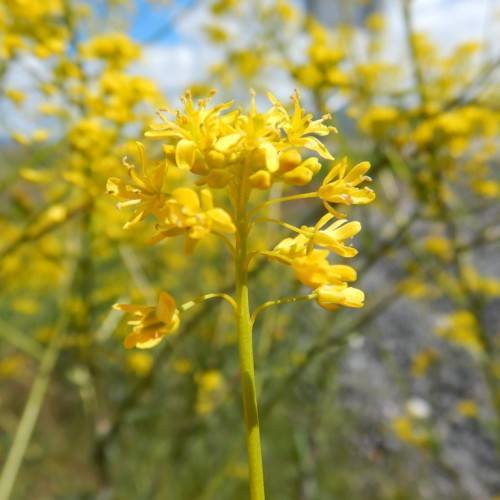
Dyer's woad
Isatis tinctoria
Cycle:
Herbaceous Perennial
Watering:
Average
Hardiness Zone:
4 - 8
Flowers:
Flowers
Sun:
Full sun
Leaf:
Yes
Growth Rate:
Low
Maintenance:
Moderate
Poisonous To Humans:
Yes
Poisonous To Pets:
Yes
Drought Tolerant:
Yes
Invasive:
Yes
Care Level:
Medium
watering
Dyer’s Woad is a moderately drought-resistant plant that requires regular watering for best results. In well-draining soil, water the plant deeply once a week in warm weather and every 2 weeks in cooler weather. In summer, water more frequently if the leaves begin to wilt. During the winter, allow the top 2 inches of the soil to completely dry out between waterings.
sunlight
Dyer's Woad (Isatis tinctoria) needs full sun for at least 6 - 8 hours a day to grow and flower. It prefers growing in well-drained, fertile soil in a sheltered location with some sunlight in the morning and evening. It tolerates partial shade but will not flower as much and could become leggy.
pruning
Dyer's woad (Isatis tinctoria) should be lightly pruned in late spring and mid-summer. Pruning should be done just after flowering to encourage bushy growth and remove any dead or damaged branches. Generally pruning should remove no more than 1-third of the plant's foliage. This will ensure that new growth is encouraged. Make sure to prune branches close to whole buds to encourage new growth in the desired shape.
